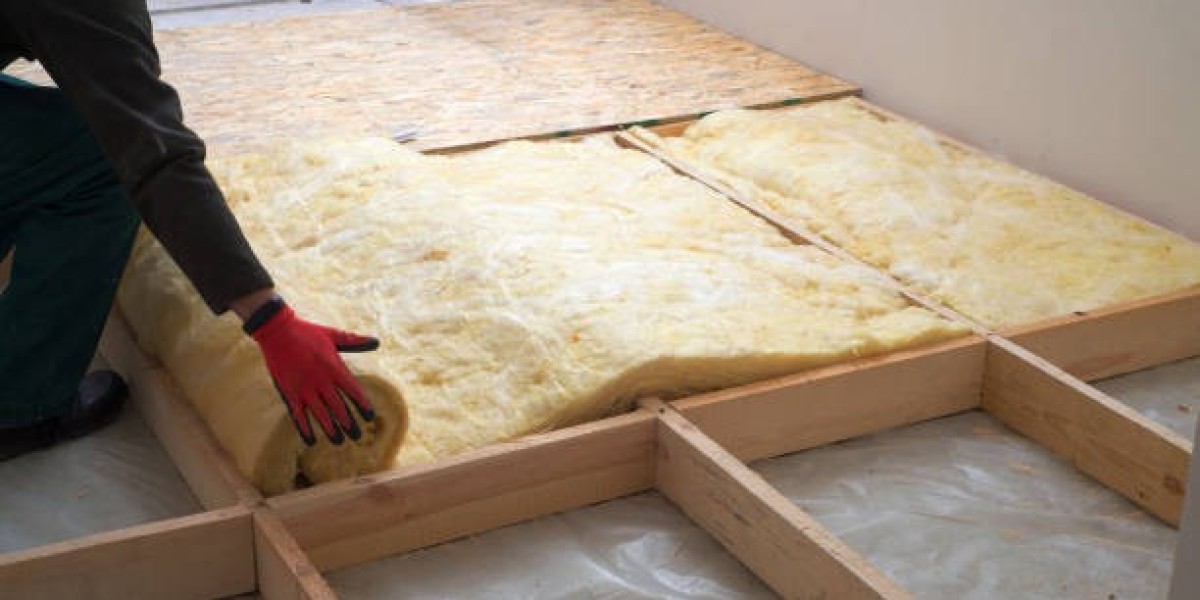As homeowners, we're constantly seeking ways to enhance our living spaces, making them more comfortable, energy-efficient, and peaceful. One often-overlooked but highly effective solution is add insulation between floors. In this comprehensive guide, we'll delve into the world of floor insulation, exploring its benefits, installation process, and factors to consider when embarking on this home improvement journey.
The Importance of Floor Insulation
Before we dive into the details, let's understand why adding insulation between floors is a valuable investment for your home.
1. Thermal Comfort
Floor insulation helps regulate indoor temperatures, keeping your home cozy in winter and cool in summer. It minimizes heat loss or gain through the floors, creating a more pleasant living environment year-round.
2. Energy Efficiency
By reducing temperature fluctuations, floor insulation eases the burden on your heating and cooling systems. This translates to lower energy bills and a reduced carbon footprint, contributing to a greener planet.
3. Noise Reduction
Insulating between floors effectively dampens sound transmission, creating a quieter and more peaceful living space. Whether it's reducing footsteps, voices, or other noises, insulation contributes to a tranquil home environment.
4. Property Value
A well-insulated home is a valuable asset. Prospective buyers often appreciate the energy efficiency and soundproofing benefits that come with insulated floors, potentially increasing your home's resale value.
Exploring Floor Insulation Options
Now that we've established the importance of floor insulation, let's explore the different materials and methods available.
1. Fiberglass Batts
Fiberglass batts are a popular choice for floor insulation. They are affordable, easy to install, and provide excellent thermal and acoustic insulation. These batts come in standard sizes and are placed between the floor joists.
2. Mineral Wool
Mineral wool, made from natural or recycled materials, is another effective insulation option. It offers superior fire resistance and soundproofing qualities. Mineral wool can be used in batts or loose-fill form.
3. Spray Foam Insulation
Spray foam insulation is a versatile option that can be used between floor joists. It expands to fill gaps and voids, creating an airtight and highly effective thermal barrier. However, professional installation is often recommended for this material.
4. Blown-In Insulation
Blown-in insulation is suitable for existing homes with floor cavities that are hard to access. It involves blowing loose-fill insulation into the cavities, effectively insulating the space.
5. Reflective Foil Insulation
Reflective foil insulation, often used in crawl spaces, can also be employed between floors. It reflects radiant heat and can complement other insulation materials.
Factors to Consider
Before you proceed with floor insulation, there are several crucial factors to consider:
1. Budget
Determine your budget for the project, including material costs and potential professional installation fees. Keep in mind that the initial investment can lead to long-term savings on energy bills.
2. Material Selection
Choose the insulation material that aligns with your goals and budget. Consider factors like R-value (thermal resistance), fire resistance, and soundproofing capabilities.
3. Building Codes and Regulations
Research local building codes and regulations to ensure compliance with insulation requirements. Certain areas may have specific codes for floor insulation.
4. Installation Method
Decide whether you'll tackle the installation as a DIY project or hire a professional. While DIY can save money, professional installation guarantees proper placement and maximizes effectiveness.
5. Accessibility
Evaluate the accessibility of the floor cavities. Some methods may be more suitable for homes with limited access between floors.
The Installation Process
Installing insulation between floors involves several steps, regardless of the chosen material. Here's a general overview:
Assessment: Begin by assessing your home's insulation needs. Identify areas that require insulation, considering factors like heat loss, noise, and accessibility.
Material Preparation: If using batts or loose-fill insulation, measure and cut the material to fit between the floor joists accurately.
Safety Gear: Prioritize safety by wearing appropriate gear, including gloves, a dust mask, and protective clothing, if necessary.
Installation: Install the insulation material between the floor joists, ensuring a snug fit without compressing the insulation. Follow the manufacturer's recommendations for proper installation.
Sealing Gaps: Seal any gaps or openings to prevent air leakage, which can reduce the insulation's effectiveness.
Verification: After installation, verify that the insulation is evenly distributed and covers the entire area.
Professional Inspection: If you opt for professional installation, schedule an inspection to ensure the insulation meets industry standards and local codes.
Conclusion
Adding insulation between floors is a wise investment in your home's comfort, energy efficiency, and tranquility. By understanding the benefits, exploring your foam insulation options, considering essential factors, and following proper installation procedures, you can enhance your living space significantly.
Whether you're looking to reduce energy costs, enjoy a quieter home environment, or increase your property's value, floor insulation is a practical solution that offers numerous advantages. So, embark on your insulation journey and create a more comfortable and efficient home today.








